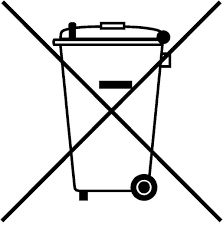We live in a world where we understand and undergo how important and necessary recycling is, with its consequences obviously. Yet do we really know what and how to recycle them? Let's view what the recycling symbols mean.
1. Mobius Loop

The Mobius Loop, which we frequently encounter everywhere in daily life and is used universally, represents the steps in the recycling process. Each arrow is a step in a process. These steps are known as: collection and separation, recycling, and processing, and finally purchasing and use. Moreover, this symbol indicates that the product can be recycled.
2. Green Dot

Although this symbol is often confused with the Mobius Loop, it does not mean the same thing. It doesn’t indicate that whether the product is recyclable but indicates that the manufacturer contributes financially to the recovery and recycling of the product.
3. Seven Symbols of Plastic

The numbers inside the plastic loops are to describe the type of plastic used for the product. The numbers inside the plastic loops are to describe the type of plastic used for the product.
- PET type plastic, indicated by the number 1 and used in water bottles, is used for products that need to be recycled but should not be reused.
- HDPE type plastic, indicated by the number 2 and used in products such as oil bottles, is a durable type of plastic that can be reused and recycled.
- PVC type plastic, shown with the number 3, are products that are produced using PVC plastic and unfortunately not recyclable.
- LDPE type plastic, which is shown with the number 4 and is generally used in plastic bags, is a type of plastic that can be reused but cannot always be recycled.
- PP type plastic, indicated by the number 5, used in plastic liners and medicine boxes, is a type of plastic that is considered safe for reuse and can be recycled.
- PS type plastic, indicated by the number 6 and used in products such as egg boxes, plastic cutlery and knives, is unfortunately a type of plastic that is not widely recycled.
- "Other", which is a collection category and is represented by the number 7, is a type of plastic that has not been standardized by reuse and recycling protocols.
4. Glass

Most of the glass products are recyclable. This symbol indicates that your glass bottle or jars are recyclable. Also remember that you should not recycle non-glass materials such as lids together.
5. Aluminum

This recycling symbol indicates that the product is made from recyclable aluminum. In addition, it is a symbol that we do not encounter frequently in daily life.
6. Electronic Waste

This symbol means that the products it is on cannot be recycled. It should therefore not be thrown away and should be taken to a collection point or clean spot for effective management.
7. “Tidyman”

This symbol is not a symbol that directly signifies recycling, but is a symbol indicating the proper storage of waste and the responsibility of consumers in this storage process.
8. Compostable

This symbol means that the product is 'compostable'.
9. NAPM Paper Symbol

This recycling symbol, given by the National Association of Paper Merchants, indicates that the product is produced with a minimum of 75% recycled paper or cardboard fiber.
10. FSC Certificate

This document, issued by the Forest Stewardship Council, shows that the products of companies that produce / sell forest products are produced in accordance with the standards set by the Forest Stewardship Council.











